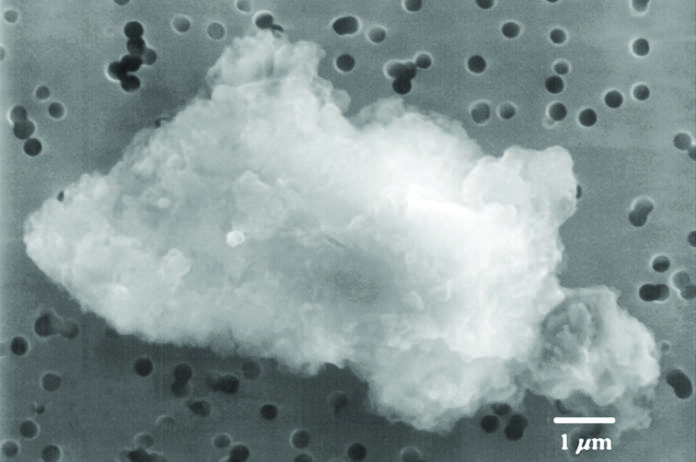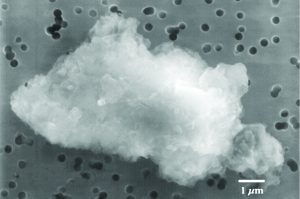
BY HANNES THUM

News headlines can be truly poetic—pithy and rich with mystery. One that stood out to me last week, from a national news outlet: “A Supernova Was Hiding in Antarctica’s Snow.”
What alchemy is this? What stunning twist of physics? An exploding star? In Antarctica? And, somehow, it had been hidden? One of the grandest and most dramatic phenomena in our universe was here on Earth? How are we even still alive with this sort of thing going on?
Now that’s a headline.
It turns out, scientists in a lab in Germany recently found certain unique elements (a rare form of iron being the most significant) buried in the snow down in Antarctica. Their theory is that this stuff was detonated and discharged outwards in some distant supernova somewhere in the universe and it has been entering our atmosphere and raining down upon us. And, they found it. Spacedust.
I’ve been picturing these scientists. A troop of snow collectors walking through the remote corners of Antarctica, bodies and faces covered in thick, insulative clothing as they struggled and tromped and stomped through the deep drifts with shovels grasped in mittened hands?
And mustn’t it have gone like this: these snow-bound folks bending their backs to the task of manually shoveling 1,100 pounds of snow (that’s how much they shoveled) into styrofoam boxes (the same cheap boxes, perhaps, that one can buy at a gas station for storing beer, or nightcrawlers, or freshly caught fish?) and then lugging and dragging those boxes back to be shipped away to a lab across the planet in Germany?
Even though they were investigating some of the most far-flung and sci-fi-sounding science, and are exploring new knowledge on the scale of the UNIVERSE ITSELF, the process of science can (must?) still involve things as menial and manual and laborious as trudging through deep snowdrifts in heavy boots and shoveling snow into boxes by hand.
It stuns me to ponder that we are also made up of stardust elements and of ancient remnants of long-ago supernovae. The atoms in our bodies are not so different than the peculiar iron that they found in the Antarctic snow. Indeed, the very people who were digging in the snow (and the snow! And the shovels! And the styrofoam!) are made up of elements born from ancient exploded stars, and they are using those elements to dig up more elements.
All of this makes most of my own day-to-day life seem somewhat trivial. I wouldn’t know how to notice spacedust if some of it were raining down on me right this second (it likely is). I am as bound to the surface of this planet as anyone else. Nonetheless, I am fascinated to know that there are people out there slowly piecing together some of the inner workings of this universe for us, while I drink my coffee (which, of course, is also made of stardust) at home (also made of stardust).
Hannes Thum is a Wood River Valley native and has spent most of his life exploring what our local ecosystems have to offer. He currently teaches science at Sun Valley Community School


